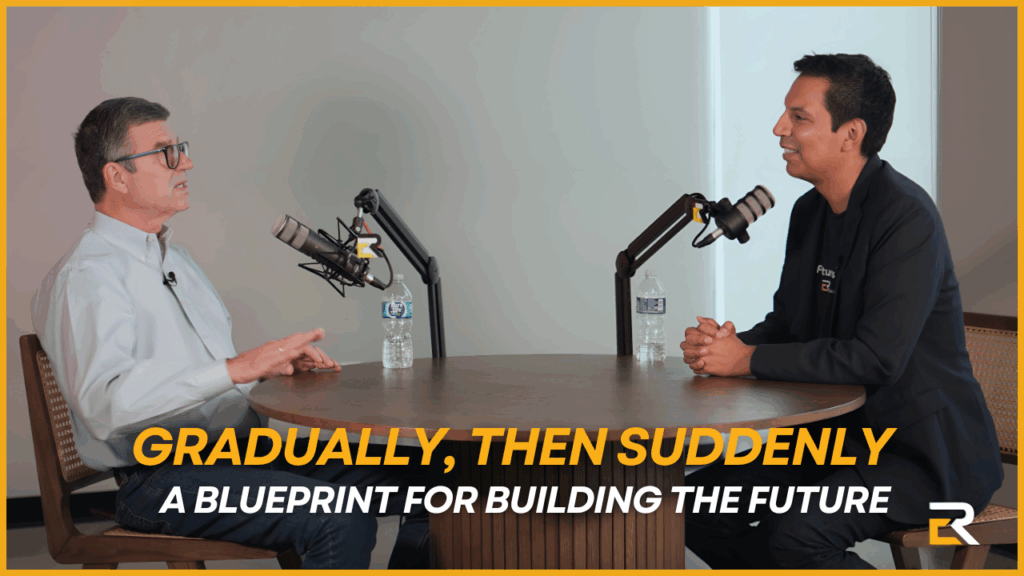
Every so often, a conversation doesn’t just reflect where we’ve been. It reveals what’s possible.
My recent dialogue with Steven Zylstra, CEO of the Arizona Technology Council, was precisely that. It was a masterclass in long-term thinking, human-centered innovation, and the kind of leadership that builds ecosystems, not headlines.
The Human Engine Behind a Tech Revolution
Change rarely feels fast until it’s already happened. As Steven noted, it happens “gradually, then suddenly.” Arizona’s rise as a global tech hub may look like a recent success, but in reality, it’s the result of decades of vision, advocacy, and collaboration.
Steven has spent over 40 years helping transform Arizona from a real estate-driven economy into one of the most dynamic technology centers in the country. But what makes his story remarkable isn’t just economic growth. It’s the intentional focus on how technology can drive societal change.
Behind every investment, tax credit, and talent pipeline is a core belief: the purpose of innovation is to uplift communities.
Purposeful Leadership: Policy Over Politics
One of the most powerful takeaways from our conversation was the Council’s decision to lean into advocacy, not as a political weapon but as a tool for unity.
Steven and his team don’t play partisan games. They focus on what policies are best for the future of Arizona’s tech ecosystem and the people in it. Tools like Vote Tech Smart and recognition for legislators who champion innovation create a culture of transparency, accountability, and shared progress.
It’s a model more regions should replicate. Authentic leadership isn’t about avoiding politics. It’s about rising above it in service of something larger.
Technology That Elevates Humanity
The Arizona SciTech Institute’s Chief Science Officer Program is one of the clearest examples of what it means to invest in the future. Students across more than 100 school districts are elected as STEM leaders, design action plans for their communities, and learn to lead starting in sixth grade.
This isn’t just about education. It’s about creating a generation of builders, collaborators, and change agents. It’s also a reminder that the most powerful tech doesn’t just connect devices. It connects people to purpose.
Collaboration Is the Catalyst
Another consistent thread in Steven’s story was collaboration, not as a buzzword but as a core operating principle.
Arizona’s momentum didn’t come from a single company or policy win. It came from chambers of commerce, public officials, educators, business leaders, and nonprofits working together for years.
That kind of collaborative gene, as Steven calls it, is rare. But it’s also replicable. In a world still defined by silos, it’s one of the most valuable assets any region or organization can cultivate.
Leadership in a Time of Possibility
As we talked, a few key questions kept surfacing. These are the kinds of questions I hope every leader, educator, and innovator reflects on:
- Are we designing environments where innovation and human potential grow together?
- Are we advocating for policies that enable long-term, equitable impact?
- Are we building not just better tech, but better lives?
Arizona’s example is clear. When you build the right climate, center your work in people, and commit to a vision beyond your timeline, you create a future worth living in.
Your Invitation to Reflect
If you’re reading this, you’re likely someone shaping the future in your own way—through your team, your classroom, your platform, or your voice.
So ask yourself:
What human-centered action can I take today that my future self and community will thank me for?
We don’t need more quick wins. We need quiet revolutions.
We need leaders willing to show up, build trust, and stay the course.
Because that’s how the future arrives—gradually, then suddenly.
Check out our latest conversations here.
Want more insights like this? Subscribe to my newsletter for reflections on innovation, leadership, and the future of human experience.
To hear the full conversation with Steven Zylstra, watch the full episode here or listen wherever you get your podcasts.